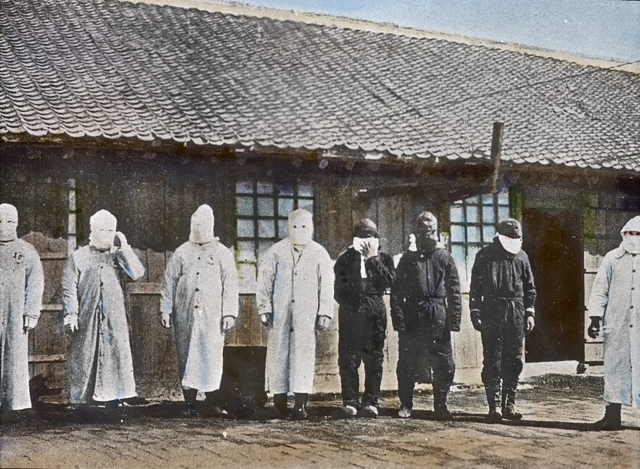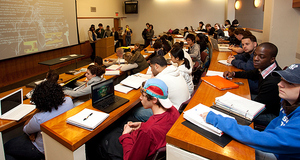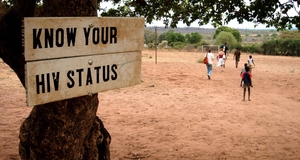From Inquiries Journal: Special Editions VOL. 2020 NO. 1Poor Cultural Communication as an Obstacle to Adequate Medical Care: A Case Study of the Manchurian Plague Epidemics
By
Inquiries Journal: Special Editions 2020, Vol. 2020 No. 1 | pg. 1/1
IN THIS ARTICLE
KEYWORDS
AbstractThis study analyzes the publications of Dr. Wu Lien-teh, health commissioner during the Manchurian plague epidemics, to demonstrate how poor cultural communication can adversely affect medical care and health policies. Combined with a case study of Indian epidemics, we show that the neglect of local culture as well as the failure to educate the public about the measures significantly reduces the effectiveness of public health approaches. Communication between doctors or health authorities and the population is important to the implementation of public health policies. Even when the government and the people have no cultural conflicts, violent riots may happen due to the distrust of authority, typified by the Italian cholera riots of 1910-11. In cases where the public health authorities and the population do not share a common culture, it is harder for effective communication to form between them. Linguistic, cultural, and ideological differences all pose difficulty for the population to understand the authorities. Poor cultural communication between doctors or health commissioners and the population can be a significant obstacle to adequate medical care and implementation of policies. In this paper, I will focus on the case of the Manchurian Plague epidemics, where the leading health commissioner, Dr. Wu Lien-teh, was solely trained in the West and had no previous contact with the local population. I will first summarize the much-studied case of the Indian plague Epidemic to illustrate the consequence of poor cultural communication. The clarity with which we see the contributions of western doctors to the strife and ultimate failure of plague measures in India, combined with Dr. Wu’s background, invites a reconsideration of Dr. Wu’s role during the Manchurian plague epidemics: how did Dr. Wu Lien-teh, as a modern doctor, contribute to cultural communications with the Manchurian populace in the years of plague epidemics? I analyzed Dr. Wu’s publications on the epidemics in the 1910s and 20s to investigate the role of cultural communication. The findings show a similar case with the Indian epidemic, in that poor cultural communications hindered the implementation of Dr. Wu’s plague prevention policies. The Indian Plague EpidemicSeveral plague epidemics occurred in the early twentieth century before the Manchurian ones. The epidemic in India was known for its riots and was a great example of poor cultural communication. Several cases of conflicts were recorded between the Indian population and the doctors sent by the British colonial government. In many of these conflicts, the government and police did not pay attention to Indian cultural and religious customs but only enforced the Western plague measures on the public, which caused violent riots that involved thousands of people and resulted in casualties. Many of the doctors and measure-enforcing officials were attacked, some even badly injured or killed when they performed actions unacceptable to local culture, which escalated the tension between the medical personnel and local population even further. In the end, the strict measures were lifted and the disease kept spreading (Cohn, 2018: 11-12). Take one typical case where the British Collector of the city of Pune, Mr. Walter Charles Rand, was assassinated after imposing severe and insensitive plague measures in the city for three months (Cohn, 2018: 13). Those measures included military entry into private houses, evacuation of individuals to segregation camps, and most unbearably, the examination of female occupants by male commissioners (a taboo in traditional Indian culture). The public protested to no avail because Rand believed that there was no intentional insult of local women and that the epidemic could only be terminated using strong measures. (Couchman, 1897: 89) The case in India not only indicated the strong adverse effect of cultural conflict for medicine but also suggests that Western doctors played a significant role in triggering those cultural conflicts because they misunderstood or neglected the cultural factors and only focused on enforcing quarantine measures. The situation, in several ways, was quite similar to that of the Manchurian plague epidemics. I will focus on the plague commissioner, Dr. Wu Lien-teh, to unfold the events in light of our theory. Case Study: The Manchurian Plague EpidemicsBackgroundA deadly pneumonic plague spread in Manchuria, the northeast portion of China’s territory, in late 1910. The Qing government commissioned Dr. Wu Lien-teh to control the plague. Dr. Wu was the first University of Cambridge medical student of Chinese descent and worked in European laboratories before moving to China (Lee et al., 2014: 99). His team ultimately played an important role in controlling the plague of 1910-1911 by conducting post-mortem exams on deceased patients to study its nature and by implementing the first mass cremation to control spreading (considered an “act of desecration” in traditional Chinese culture, but conducted after obtaining an Imperial Edict) (Lee et al., 2014: 100).
Figure 1: Some of the world's earliest "Personal Protective Equipment" was introduced by Dr. Wu during the Manchurian Plague. Photo credit: USC Libraries. Dr. Wu was widely described as a revolutionary figure in the modern Chinese public health system. After the end of the 1910-1911 epidemic, he established and led the North Manchurian Plague Prevention Service (NMPPS) to continue research into the plague as well as working to prevent future outbreaks. He also developed and oversaw the production of masks to prevent infection. Ultimately, Dr. Wu and his team succeeded in preventing the plague of 1920-1921 from spreading widely, as they accumulated more knowledge about the animal origins (marmots) of the disease and devised methods to prevent spreading such as stopping the marmot fur trade and developing gauze masks (Ma, 1995: 38-39). However, he faced civil unrest that disrupted his medical work. Mobs formed and riots occurred in cities such as Harbin and Kirin, because of “sanitary regulations” and because people were prevented from leaving the city. The anti-foreign sentiment among the population was also a factor, where a riot in Shaanxi Province in 1918 occurred because the public believed that the “foreign doctors were cutting up and killing people,” with Dr. Wu among the doctors cited. Dr. Wu believed it was an American doctor’s carelessness that ignited the riot, as he did not clean up after a post-mortem examination, which was culturally unbearable for the bereaved Chinese families (Cohn, 2018: 6-7). Moreover, born in Malaysia and educated at Cambridge, Dr. Wu was not proficient in Chinese when he first arrived in Manchuria and required an interpreter. It is increasingly recognized that he had lost contact with the “more subtle” aspects of Chinese culture and people (Flohr, 1996: 379), as the majority of the populace could not understand Western measures. It is therefore worth investigating the role of cultural communication in the unrest. Analysis of the EpidemicTo understand the effect of potential cultural miscommunication in the Manchurian epidemics, I analyzed Dr. Wu Lien-teh’s publications on the Manchurian plague between 1913 and 1926. They provided key insights into Dr. Wu’s plague measures and the population’s responses to the measures. In his 1913 publication, First Report of the North Manchurian Plague Prevention Service, he quoted from a paper read at the International Plague Conference on the 1910-11 plague, which stated that several “coolies” ran away to different places in town and disseminated the disease (Wu, 1913: 246). “Coolie” was a word for indentured laborers from China and India, historically related to US and European imperialism (Chang, 2015). Despite its racist nature, it was a common word used in the Western world then. Dr. Wu used it many times throughout the report, including his description of Manchouli: “… 2000 Chinese, most of whom are of the coolie class,” and describing the inns occupied by the “coolies” as “unhealthy huts” (Wu, 1913: 249). He believed that the “coolie” class of Manchuria that was living in very poor hygiene conditions was responsible for the spread of the disease. In a 1922 publication, he still used the word “coolie” when describing the poorer workers in China. Also, the paper started with “plague is essentially an oriental disease” (Wu, 1922: 62). He directly linked the disease to the region “orient,” which was a word often linked to diseases and the filthy living conditions of poor Asian workers (Kowner, 2012: 109-111). Again, the usage of this word was common in Europe at the time. This illustrates his identity as a Europe-trained doctor with a completely Western approach to problems, possibly having the preconception of Asian lower-class people as the main carriers of diseases. Dr. Wu interpreted the “coolie” population as intentionally uncooperative to his modern measures, rather than merely ignorant. As shown in his publications, this made him increasingly frustrated, which likely further impeded communication with the populace. For example, although he initially suggested that one of the NMPPS’s duty is “Education of the public by lectures and the issue of pamphlets and handbills, explaining preventive measures in simple language,” (Wu, 1913: 238), his 1922 paper stated that “the poorer members of the community did not understand the value of preventive measures and refused to report cases,” (Wu, 1922: 67) which suggested a total failure of the supposed education of the public. Dr. Wu then emphasizes how easily pneumonic plague can be controlled, before adding a telling parenthetical: “if only the human machine were not such a complex psychological and withal obstinate factor” (Wu, 1922: 67). Here, he cannot help putting the parentheses consisting of colloquial language (“if only”) into this scientific report. It made him feel that all his efforts on plague control were futile. He also stated later, when he was showing the effectiveness of the isolation wards compared with the situation in another city, that “owing to incomplete organization and the obstinacy and disobedience of the mining coolies… 21.8 percent died of plague” (Wu, 1922: 68). He used bitter sarcasm when talking about the uncooperative “coolies,” identifying them as responsible for the devastation. He described the organization there as “incomplete,” which was a much milder term compared with his language describing the “coolies,” “obstinacy and disobedience,” suggesting that he believed the people’s behavior was the primary reason for their own demise, demonstrating a bad relationship between him and the populace. By offering a comparison between numbers (8.1% plague death in isolation wagons compared with 21.8% for the uncooperative Dalainor), it is evident that he was frustrated, maybe even furious, at why people are not following his measures when they are proven to be effective. As we shall see, people not only failed to conform to his measures but even went as far as interrupting his work. When a scientific experiment of his team did not produce ideal results, he stated that “the conditions… were not favorable, as our men were continuously threatened by the ignorant populace with personal violence and our hospital with fire” (Wu, 1922: 75). This shows the severe tension between Dr. Wu’s team and the local population. Although he seemingly poured out his accumulated anger over time on this single incident, it did provide insights into why he was so emotional. Dr. Wu, educated at Cambridge University, having worked at professional, well-equipped labs in Europe, came to Manchuria to combat the plague, only to find his own life threatened and the populace not conforming to his effective policies. This led to him seeing the populace that was hostile towards his work as backward and impenetrable, and in turn, he put his blame on them. This likely made their relationship worse over time as the cultural conflict continued. There is a similar incident recounted in Dr. Wu’s major publication to the League of Nations, A Treatise on Pneumonic Plague. He wrote about a local soldier unhappy about the anti-plague measures on his inn business who attacked the police enforcing it, making the measures come to a standstill. When they were about to restart the measures, however, the “coolies” living in the inn had spread the disease to other places, which is a chain of events reminiscent of his 1913 publication (Wu, 1926, 80-81). As shown in this case, the failure of communicating with the local population over several years resulted in much more inefficient plague measures. DiscussionCurrent academic articles (Lee et al., 2014 & Flohr, 1996) describe Dr. Wu Lien-teh as an aspiring modern doctor trained in Europe who sought to improve the backward Chinese medical system. Studies also pointed out the turmoil among the populace as a result of the anti-plague measures, illustrating Dr. Wu’s difficulties facing the populace. However, the analysis above offers an alternative perspective, pointing at how Dr. Wu’s problems with cultural communication hindered the effectiveness of his plague measures. As a Europe-trained doctor with skills in modern medicine and public health, it was difficult for Dr. Wu to adjust to the traditional culture of Manchuria. Despite the effectiveness of his plague control measures, he faced much civil unrest which reduced their impact. Dr. Wu’s experience of the Manchurian plague, similar to the case of the Indian plague, serves as an example of medical difficulty due to cultural misunderstanding. It is also helpful to reconsider the plague in India that was discussed above. Both of them involved foreign-trained doctors having difficulties imposing measures on the local population. While the Indian plague showed the doctors and officials ignoring the local traditions and culture, in the Manchurian epidemics the doctors and officials saw the population as ignorant and belligerent, which made the cultural differences evolve into a conflict rather than an effective compromise. One factor that led to such results may be the sense of superiority experienced by the Western-trained doctors over the population, which made them more unlikely to adjust their measures according to the population and eventually ignite cultural conflicts that backfired against their intention. These problems are not of utmost importance in India and China right now, as their medical system has been modernized and greatly improved in the past century. However, the topic of potential conflicts between doctors and local populations remains relevant today. International organizations that provide medical assistance all over the world involve doctors working in unfamiliar environments. Cultural understanding is especially necessary under such contexts because problems similar to the Manchurian and Indian plague prevention efforts might occur again if the doctors misunderstand or neglect distinctive aspects of the local culture. Here I recommend several specific methods to enhance cultural understanding. First, it would be beneficial to connect the doctors directly with local people with sufficient knowledge of the region’s tradition and culture. The doctors would thus be fully informed about the local situation before going into work. Second, it would be necessary to inform or educate the public about the intentions of any measures, and any measures that might violate cultural traditions or norms should be seriously considered before implementation, as a method to keep the population cooperative and to lower the risk of potential conflicts. Finally, necessary training needs to ensure that the doctors maintain an objective view on the population without negative personal sentiment such as assuming them to be “ignorant” or “uneducated,” as our cases have proven that these preconceptions make it harder to communicate effectively with them. ConclusionThis study investigated the effects of poor cultural communication in the Manchurian plague epidemics by analyzing Dr. Wu Lien-teh’s publications. The findings indicate that Dr. Wu’s policies and measures became more ineffective because people were unwilling to cooperate with them. This conclusion emphasizes the importance of cultural understanding for effective medical measures, and several methods to enhance cultural understanding and communication in the future have been provided. Further extensions of this research may focus on the evolving relationship between doctors and patients over a broader period of time as well as the role communications played in conflicts without significant cultural differences. ReferencesChang, K. (2015). Coolie. In Schlund-Vials, C. J., Võ, L. T. & Wong, K. C. (Eds.), Keywords for Asian American Studies. NYU Press. Cohn, S. K. (2018). Plague beyond India. In Epidemics: Hate and Compassion from the Plague of Athens to AIDS. Oxford Scholarship Online. Cohn, S. K. (2018). Plague since 1894. In Epidemics: Hate and Compassion from the Plague of Athens to AIDS. Oxford Scholarship Online Couchman, M. E. (1897). Account of plague administration in the Bombay Presidency from September 1896 till May 1897. Flohr, C. (1996). The Plague Fighter: Wu Lien-teh and the beginning of the Chinese public health system. Annals of Science, 53(4) Kowner, R. (2012) Between Contempt and Fear: Western Racial Constructions of East Asians since 1800. In Kowner, R. & Demel, W. (Eds.), Race and Racism in Modern East Asia: Western and Eastern Constructions. BRILL. Lee K. H. et al. (2014). Dr. Wu Lien-teh: modernising post-1911 China’s public health service. Singapore Medical Journal, 55(2) Ma B. (1995). Wu Lien-teh: the pioneer of Chinese modern public health institution (中国近代医学卫生事业的先驱者伍连德),China Historical Materials of Science and Technology, 16(1) Wu, L. (1926). A Treatise on Pneumonic Plague. Geneva: League of Nations Health Organization. Wu, L. (1913). First Report of the North Manchurian Plague Prevention Service. Journal of Hygiene, 13(3) Wu, L. (1922). Plague in the Orient with Special Reference to the Manchurian Outbreaks. Journal of Hygiene, 21(1) Suggested Reading from Inquiries Journal
Inquiries Journal provides undergraduate and graduate students around the world a platform for the wide dissemination of academic work over a range of core disciplines. Representing the work of students from hundreds of institutions around the globe, Inquiries Journal's large database of academic articles is completely free. Learn more | Blog | Submit Latest in History |




















